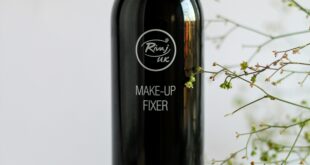TerraCycle estimates that a new aluminum bottle has two times the “global-warming cost” impact as a new plastic bottle made of polyethylene terephthalate (PET), which is the most widely recycled plastic. By 2050, global demand for new aluminum is expected to increase by up to 40 percent, according to the International Aluminum Institute, and post-consumer recycled aluminum will more than triple. A soaring demand can drive up product costs, too. So, while there is a movement in low-carbon aluminum mining, which some producers claim creates up to three times less CO2 in production than new aluminum, it still leaves a case for using the materials already extracted from the earth and not going in for more. “Aluminum recycling is good, but if recycling is bad or doesn’t exist where you live, buy the plastic bottle over aluminum,” says Szaky.
As is often the case with environmental action, this catch-22 unties the bow from what would otherwise be a very tidy solution. Recycling processes are very, very nuanced with varying statistics and practices around the world — even around a single American state. As of April 2021, Allure no longer refers to any plastic packaging as recyclable since research shows that most plastic never makes it through the recycling process. (Less than 10 percent of all the plastic ever produced has actually been turned into something else.) Too much onus still falls on consumers to understand what can be recycled by their own municipality — a Google hole few have time to wander into.
“Just throwing anything plastic, paper, or metal in the recycling bin and hoping for the best is what we call ‘wish-cycling’ and we really encourage people to not do it,” says Mia Davis of Credo, who also helped launch Pact Collective, which helps gather and find new uses for hard-to-recycle materials from beauty packaging. “I used to do it myself, but it can really gum up the system and even make [the work happening at] recycling facilities more dangerous and expensive. The last thing we need to do is make recycling more difficult.”
The state of California passed a bill in October making it illegal to use the triangle of three arrows — a.k.a. the “chasing arrows” or Mobius loop — on things that are never going to be recycled, so people don’t automatically assume it can go in their blue bin. Many mistakenly believe the arrows indicate recyclability when they are really only meant to identify the type of plastic. (FYI, only plastics #1, #2, and sometimes #5 usually have a chance of being recycled in most municipalities.) Retailers Nordstrom and Credo make beauty packaging recycling easier by providing in-store drop points, so you don’t have to deal with mailing products or sorting out your local recycling rules. Credo is also requiring brands to put plastic recycling numbers on plastic packaging by 2024 (some brands don’t add them), and GreenBlue is also providing assets that will clarify how to dispose of packaging with their How2Recycle labeling system.
“The very progressive brands are recognizing that they need to get involved in the collection process as well so they have the material to be circular,” says Goodrich. “So one thing is building the capacity to be able to process the material in a way that it can be reused and the other is ensuring that we’re collecting the material that is available. Both of those things need continued pressure.”
https://www.allure.com/story/aluminum-packaging-trend-report
 fashion rec fashion wanted
fashion rec fashion wanted

